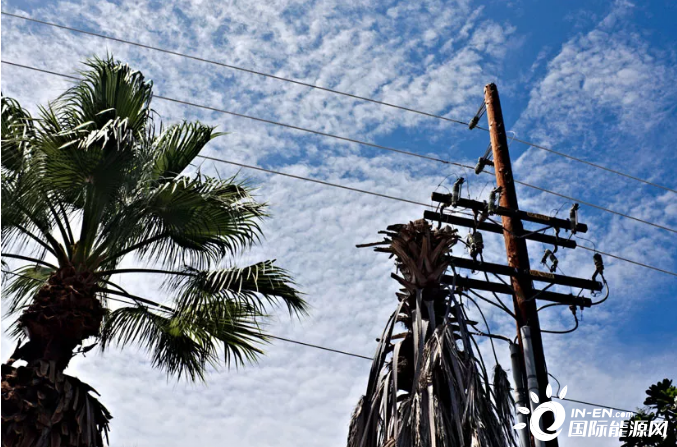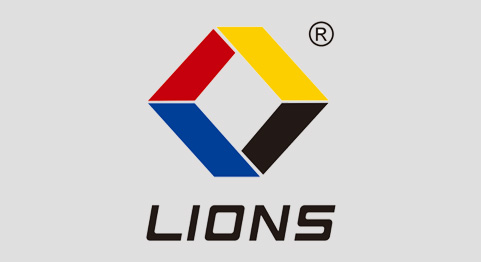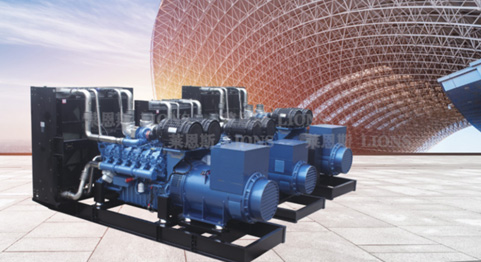Multi-scale Integrated Dynamic and Scheduling Model for Power Systems supporting 100% Renewable Energy
2021-08-19
Maui Island, in the US state of Hawaii, will become the world's first interconnected transmission system to harness 100% of its wind and solar power generation in real time. That's well ahead of the state's plan to switch to clean energy by 2045.
By 2024, maui plans to have more than 175MW of new light storage hybrid plants in service. With nearly 200MW of wind and solar power currently on the island's grid, the new facility will provide maui's approximately 70,000 customers with enough renewable energy that the island will not need any conventional power generation all year round. Managing such a high proportion of uncertain resources is a first for a grid the size of Maui, so the National Renewable Energy Laboratory (NREL) is developing and validating multi-timescale tools to ensure that Maui and other similar systems can move closer and more steadily to 100 percent clean energy in the future.

Managing renewable Energy reliability and Planning - Maui grid Operations system MIDAS Touch
Wind and solar power add a great deal of uncertainty to new power systems, even as it fundamentally changes the physics and control mechanisms of grid stability. This uncertainty is particularly problematic for grid operators when dispatching these new sources of energy to provide electricity to customers or to service the stability of the grid. Because renewable energy dominated new power systems are emerging as new things, there are few systematic ways to deploy renewable energy to achieve grid stability over multiple time scales. Therefore, most operators still regard renewable energy as an unschedulable and uncontrollable resource when dispatching.
However, one thing is certain: the entire grid can be serviced using renewable energy alone [1]. All that remains is that dispatchers should use the right tools to manage the new power system.
"Technically, inverter-based resources such as wind, solar and battery storage can be programmed to provide all types of grid assist services", explains Jin Tan, principal investigator (PI) for several projects at the National Renewable Energy Laboratory. The projects Tan is studying aim to achieve a power system powered by 100% renewable energy.
"The problem is the system operator basically won't use these programming method. The system operators need to seek new market rules to encourage renewable energy grid services actively. They need some tools to verify the performance of the renewable energy systems, or management and scheduling variable resources such as solar and wind energy, economy and operation aspects of associated risks."

Maui's power generation portfolio. Soon even larger optical storage plants will come into service. Photo courtesy of Hawaiian Electric.
Tan led the development of MIDAS (Multi-Timescale Integrated Dynamic and Scheduling Planning Model [2]), a system software developed by the National Renewable Energy Laboratory to help grid operators manage a high proportion of renewable energy systems. The software provides operational intelligence and advanced systems analysis capabilities.
MIDAS, funded by the U.S. Department of Energy's Solar Energy Technology Office (SETO), enrichies existing dispatch operations tools for managing power markets, performing reliability analysis, and rapid small-time-scale dynamic systems analysis. Unlike existing tools, MIDAS connects the economic analysis of grid operations with dynamic reliability assessments, so grid operators can weigh the benefits of renewable (and non-renewable) assets before deciding on the dispatch of various grid services.
Further, MIDAS enables Maui to plan ahead and use more renewable energy by modeling future low-inertia power systems [3]. The model identifies potential system reliability issues on time scales from resource adequacy (years to days) and energy balance (days to minutes) to frequency dynamics (minutes to seconds) and electromagnetic transiencies (subseconds), providing a panoramic view of Maui's high proportion of renewable energy systems. For other high proportion renewable energy, low inertia systems, the national Renewable Energy Laboratory's multi-time scale reliability and stability analysis tool is equally important.
Time scales - resource adequacy (years to days), energy balance (days to minutes), frequency dynamics (minutes to seconds), and electromagnetic transients (subseconds)
"In the past, everything in the power system was precise. We could schedule and dispatch generation knowing that the system was stable." "Now, for renewable energy, we need to consider new factors, such as the fast frequency response capacity of inverter-based resources or stability constraints of the grid. Otherwise, current scheduling models can no longer reliably support day-to-day operations." - JinTan
Multi-scenario stability analysis: Complete electromagnetic transient model for Maui
At the subsecond level, inverter-based resources (IBR) -- wind and solar -- will make waves on the low-inertia grid. While power systems have historically relied on rotating generators to eliminate subsecond disturbances, inverter-based resources are gradually replacing these rotating devices, and maui or similar systems require new grid stabilizers. The National Renewable Energy Laboratory has been working on low-inertia dynamics and has a lot of experience in how to solve these problems.
Andy Hoke, senior research engineer at the National Renewable Energy Laboratory, said, "No one has ever run a power system the size of Maui, which is 100 percent serviced by solar, wind and storage batteries alone; to run a grid with up to 80 to 100 percent inverter resources in real time and reliably, We need to take some important steps, first to validate in the laboratory and then to prepare for field implementation." Hoke led the study of subsecond analysis and electromagnetic transient (EMT) analysis of high renewable energy systems to verify system stability.
With maui at the forefront of renewable energy applications requiring a targeted and thorough electromagnetic transient stability analysis, Hoke's team at the National Renewable Energy Laboratory modeled the entire island's transmission system -- hundreds of lines, buses, and transformers; Photovoltaic, energy storage and wind energy systems and their inverter control -- all based on subsecond time scale [4]. The NATIONAL Renewable Energy Laboratory team also modeled a number of scenarios for Maui's future power system: low inertia, no inertia, and how to restore inertia.
"With Maui operating on close to 100% renewable energy, there are a number of options to ensure grid stability," Hoke said. "A 100% renewable energy system on Maui can be stabilized using synchronous modulators [5] or grie-side wide-area programming with a relatively small number of inverters [6]. At least in the simulation."
A 100% renewable energy system on Maui can be stabilized, at least in the simulation, using a synchronous camera, or by using grid side wide-area programming on a relatively small number of inverters.
The team also found that traditional modeling tools can miss critical stability dynamics when inverter resources are at very high proportions. In addition, even high-fidelity models may lack necessary information, such as proprietary controls for commercial inverters. In order to be 100% sure of 100% stable renewable energy systems, the National Renewable Energy Laboratory brings research closer to reality with large-scale hardware test benches.
Final testing prior to field validation
In maui completely renewable energy operations before the final validation support from the office of the department of energy (doe) solar energy technology, through the office awarded the national renewable energy laboratory, called "SAPPHIRE" project to develop hybrid renewable energy power station control system [7], for renewable energy systems stability study provides double insurance. The project, funded with a total of $3.6 million, combines stability control (Hoke's research) with the MIDAS Operational framework (Tan's research).
Jin Tan, principal investigator of the SAPPHIRE Project, said, "This study looks at solutions to renewable energy operations from [long time scale] planning to [small time scale] electromagnetic transient stabilization so that Maui and other high-proportion renewable energy systems have everything they need to manage a stable and economic system."
The National Renewable Energy Laboratory will first use the Advanced Research Platform for Integrated Energy Systems (ARIES) [8] to develop actual power control and risk mitigation for hybrid power resource plants. The ARIES platform provides an exact replica of the grid simulation environment in Maui [9] to verify the impact of subsequent multiple types of renewable energy and to assess real-time inertia and stability.
"In order to eliminate the risk of a 100 percent renewable energy system, we need to operate under real-world grid conditions," said Hoke, co-principal investigator of the SAPPHIRE project. "With the ARIES platform, we can connect grid equipment to the actual power supply and replicate them in the actual Maui environment. This is a reliable way for us to verify performance and stability before practical application." Hoke is developing dynamic stability control for the project.
The project will conclude with a 60MW demonstration system in Maui, which, though only three years old, can be used to demonstrate that 100% renewable energy is feasible. Maui will set a milestone for renewable energy and demonstrate that the technical capabilities and operational tools of the National Renewable Energy Laboratory can achieve the same goals for clean energy systems anywhere.
By 2024, maui plans to have more than 175MW of new light storage hybrid plants in service. With nearly 200MW of wind and solar power currently on the island's grid, the new facility will provide maui's approximately 70,000 customers with enough renewable energy that the island will not need any conventional power generation all year round. Managing such a high proportion of uncertain resources is a first for a grid the size of Maui, so the National Renewable Energy Laboratory (NREL) is developing and validating multi-timescale tools to ensure that Maui and other similar systems can move closer and more steadily to 100 percent clean energy in the future.

Managing renewable Energy reliability and Planning - Maui grid Operations system MIDAS Touch
Wind and solar power add a great deal of uncertainty to new power systems, even as it fundamentally changes the physics and control mechanisms of grid stability. This uncertainty is particularly problematic for grid operators when dispatching these new sources of energy to provide electricity to customers or to service the stability of the grid. Because renewable energy dominated new power systems are emerging as new things, there are few systematic ways to deploy renewable energy to achieve grid stability over multiple time scales. Therefore, most operators still regard renewable energy as an unschedulable and uncontrollable resource when dispatching.
However, one thing is certain: the entire grid can be serviced using renewable energy alone [1]. All that remains is that dispatchers should use the right tools to manage the new power system.
"Technically, inverter-based resources such as wind, solar and battery storage can be programmed to provide all types of grid assist services", explains Jin Tan, principal investigator (PI) for several projects at the National Renewable Energy Laboratory. The projects Tan is studying aim to achieve a power system powered by 100% renewable energy.
"The problem is the system operator basically won't use these programming method. The system operators need to seek new market rules to encourage renewable energy grid services actively. They need some tools to verify the performance of the renewable energy systems, or management and scheduling variable resources such as solar and wind energy, economy and operation aspects of associated risks."

Maui's power generation portfolio. Soon even larger optical storage plants will come into service. Photo courtesy of Hawaiian Electric.
Tan led the development of MIDAS (Multi-Timescale Integrated Dynamic and Scheduling Planning Model [2]), a system software developed by the National Renewable Energy Laboratory to help grid operators manage a high proportion of renewable energy systems. The software provides operational intelligence and advanced systems analysis capabilities.
MIDAS, funded by the U.S. Department of Energy's Solar Energy Technology Office (SETO), enrichies existing dispatch operations tools for managing power markets, performing reliability analysis, and rapid small-time-scale dynamic systems analysis. Unlike existing tools, MIDAS connects the economic analysis of grid operations with dynamic reliability assessments, so grid operators can weigh the benefits of renewable (and non-renewable) assets before deciding on the dispatch of various grid services.
Further, MIDAS enables Maui to plan ahead and use more renewable energy by modeling future low-inertia power systems [3]. The model identifies potential system reliability issues on time scales from resource adequacy (years to days) and energy balance (days to minutes) to frequency dynamics (minutes to seconds) and electromagnetic transiencies (subseconds), providing a panoramic view of Maui's high proportion of renewable energy systems. For other high proportion renewable energy, low inertia systems, the national Renewable Energy Laboratory's multi-time scale reliability and stability analysis tool is equally important.
Time scales - resource adequacy (years to days), energy balance (days to minutes), frequency dynamics (minutes to seconds), and electromagnetic transients (subseconds)
"In the past, everything in the power system was precise. We could schedule and dispatch generation knowing that the system was stable." "Now, for renewable energy, we need to consider new factors, such as the fast frequency response capacity of inverter-based resources or stability constraints of the grid. Otherwise, current scheduling models can no longer reliably support day-to-day operations." - JinTan
Multi-scenario stability analysis: Complete electromagnetic transient model for Maui
At the subsecond level, inverter-based resources (IBR) -- wind and solar -- will make waves on the low-inertia grid. While power systems have historically relied on rotating generators to eliminate subsecond disturbances, inverter-based resources are gradually replacing these rotating devices, and maui or similar systems require new grid stabilizers. The National Renewable Energy Laboratory has been working on low-inertia dynamics and has a lot of experience in how to solve these problems.
Andy Hoke, senior research engineer at the National Renewable Energy Laboratory, said, "No one has ever run a power system the size of Maui, which is 100 percent serviced by solar, wind and storage batteries alone; to run a grid with up to 80 to 100 percent inverter resources in real time and reliably, We need to take some important steps, first to validate in the laboratory and then to prepare for field implementation." Hoke led the study of subsecond analysis and electromagnetic transient (EMT) analysis of high renewable energy systems to verify system stability.
With maui at the forefront of renewable energy applications requiring a targeted and thorough electromagnetic transient stability analysis, Hoke's team at the National Renewable Energy Laboratory modeled the entire island's transmission system -- hundreds of lines, buses, and transformers; Photovoltaic, energy storage and wind energy systems and their inverter control -- all based on subsecond time scale [4]. The NATIONAL Renewable Energy Laboratory team also modeled a number of scenarios for Maui's future power system: low inertia, no inertia, and how to restore inertia.
"With Maui operating on close to 100% renewable energy, there are a number of options to ensure grid stability," Hoke said. "A 100% renewable energy system on Maui can be stabilized using synchronous modulators [5] or grie-side wide-area programming with a relatively small number of inverters [6]. At least in the simulation."
A 100% renewable energy system on Maui can be stabilized, at least in the simulation, using a synchronous camera, or by using grid side wide-area programming on a relatively small number of inverters.
The team also found that traditional modeling tools can miss critical stability dynamics when inverter resources are at very high proportions. In addition, even high-fidelity models may lack necessary information, such as proprietary controls for commercial inverters. In order to be 100% sure of 100% stable renewable energy systems, the National Renewable Energy Laboratory brings research closer to reality with large-scale hardware test benches.
Final testing prior to field validation
In maui completely renewable energy operations before the final validation support from the office of the department of energy (doe) solar energy technology, through the office awarded the national renewable energy laboratory, called "SAPPHIRE" project to develop hybrid renewable energy power station control system [7], for renewable energy systems stability study provides double insurance. The project, funded with a total of $3.6 million, combines stability control (Hoke's research) with the MIDAS Operational framework (Tan's research).
Jin Tan, principal investigator of the SAPPHIRE Project, said, "This study looks at solutions to renewable energy operations from [long time scale] planning to [small time scale] electromagnetic transient stabilization so that Maui and other high-proportion renewable energy systems have everything they need to manage a stable and economic system."
The National Renewable Energy Laboratory will first use the Advanced Research Platform for Integrated Energy Systems (ARIES) [8] to develop actual power control and risk mitigation for hybrid power resource plants. The ARIES platform provides an exact replica of the grid simulation environment in Maui [9] to verify the impact of subsequent multiple types of renewable energy and to assess real-time inertia and stability.
"In order to eliminate the risk of a 100 percent renewable energy system, we need to operate under real-world grid conditions," said Hoke, co-principal investigator of the SAPPHIRE project. "With the ARIES platform, we can connect grid equipment to the actual power supply and replicate them in the actual Maui environment. This is a reliable way for us to verify performance and stability before practical application." Hoke is developing dynamic stability control for the project.
The project will conclude with a 60MW demonstration system in Maui, which, though only three years old, can be used to demonstrate that 100% renewable energy is feasible. Maui will set a milestone for renewable energy and demonstrate that the technical capabilities and operational tools of the National Renewable Energy Laboratory can achieve the same goals for clean energy systems anywhere.










